
Armored Car T17 Deerhound.

The drivers' vision doors are open on this T17, and the assistant driver's door in the side of the hull can also be seen. The drivers had plastic-protected vision slots closed by steel shutters in their vision doors for forward vision, and periscopes for when the shutters were closed. The barrel of the coaxial machine gun is visible to the 37mm gun's right. The bow MG is inboard of the right-hand headlight, and the vehicle's siren is mounted inboard of the driver's side headlight. (Picture from TM 9-740 Armored Car T17.)
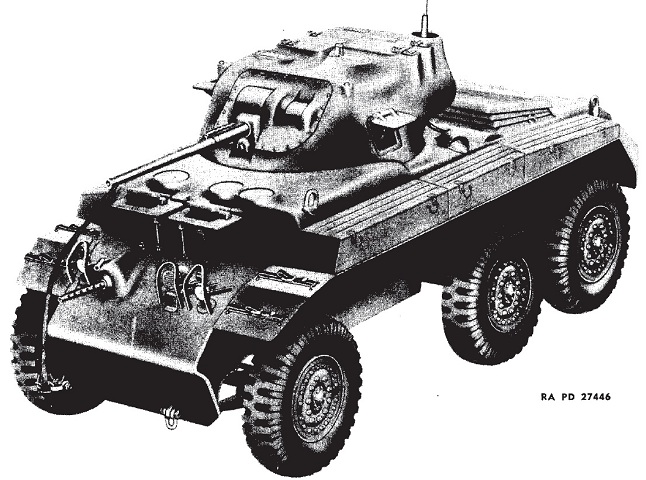
The drivers' vision doors are again open in this image, along with the turret pistol ports. The turret was provided with two roof hatches. The gunner used a sighting periscope mounted to the left of the 37mm gun; this periscope had an integral sighting telescope. Stowage boxes line the fenders, and the engine air intake can be seen behind the turret. (Picture from TM 9-740 Armored Car T17.)
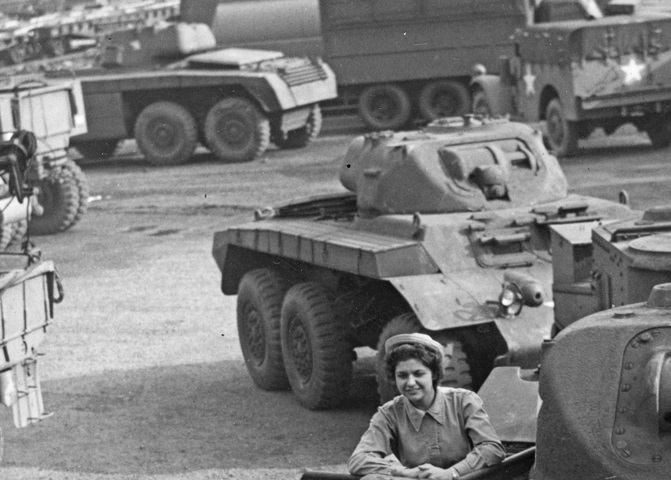
In the foreground, members of the Women's Army Corps maneuver two medium tanks M3, while in the background are a scout car M3A1 and two T17s. The T17s are unarmed, and the aperture for the 37mm gun has been plugged in the car facing the camera. (Picture taken 16 Feb 1944; available from the National Archives.)
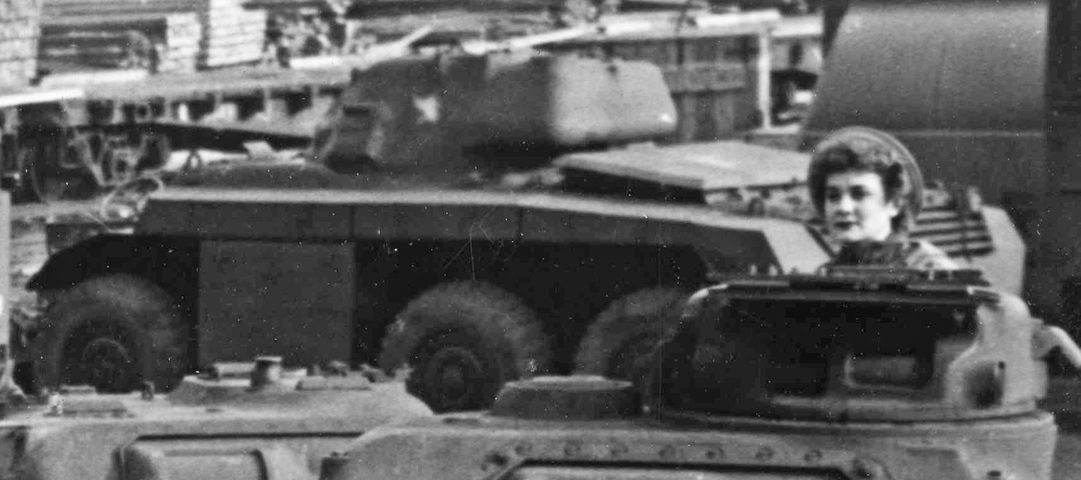
A cropped detail of the distant T17 seen in the previous image reveals details of the engine air intake and exhaust outlets. (Picture taken 16 Feb 1944; available from the National Archives.)
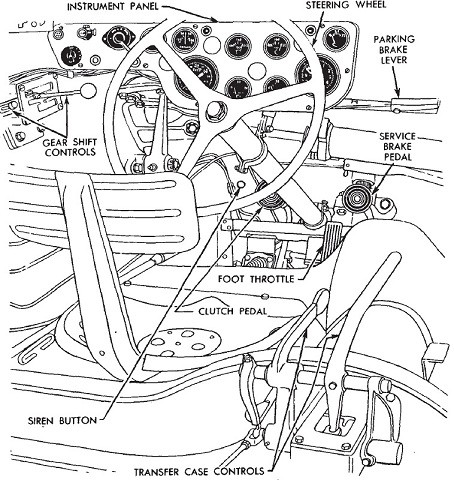
The driver's position and controls are shown here. (Picture from TM 9-740 Armored Car T17.)
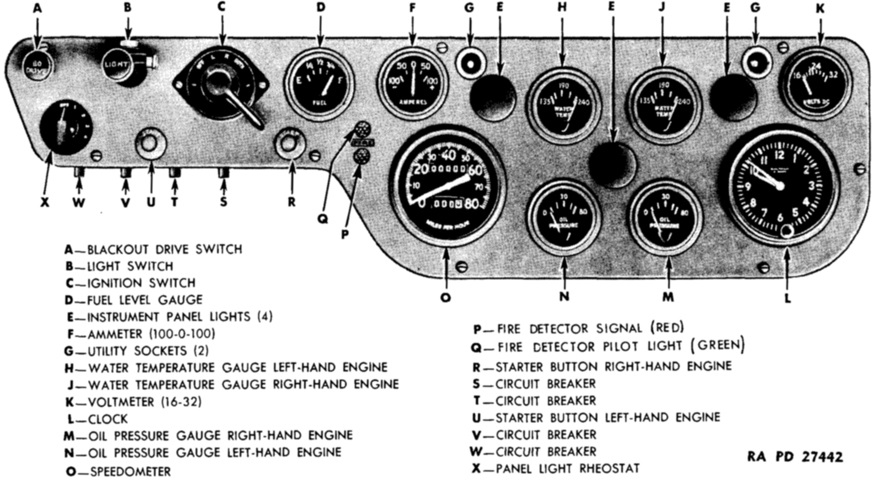
The driver's instrument panel is labeled in this image. (Picture from TM 9-740 Armored Car T17.)

The positions of the vehicle's gear shifter are illustrated here. Either transmission could be disconnected and kept in neutral, allowing the vehicle to run on a single engine. To accomplish this, with the gear shift lever in neutral, the sliding button was moved to the forward or rear positions. (Picture from TM 9-740 Armored Car T17.)

The transfer case controls are shown here. The short lever engaged the front axle, and this was accomplished with the vehicle moving slowly. The long lever toggled between high and low ranges for both or either engine. The front axle was always engaged before low gear was engaged. (Picture from TM 9-740 Armored Car T17.)

A rear view of the twin engines is displayed in this image. With the attached transmission and accessories, each engine weighed about 1030lb (467kg). The JXD featured a 6.5:1 compression ratio, and a 4" (10cm) bore and 4.25" (10.8cm) stroke, yielding a total displacement of 320in³ (5200cm³) per engine. (Picture from TM 9-740 Armored Car T17.)
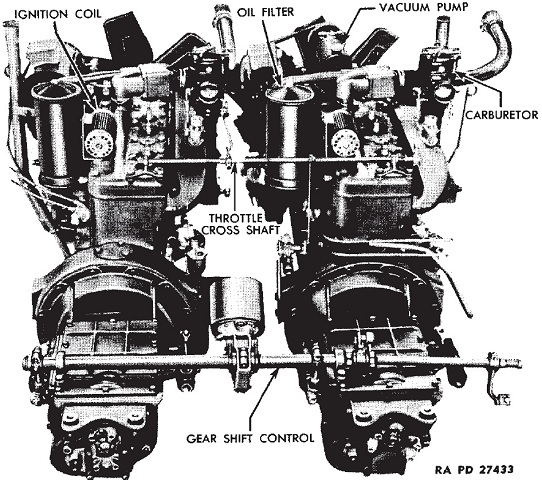
The front of the engines is shown here, with the attached transmissions. The transmissions had 4 forward speeds and 1 reverse. Gear ratios were 6.499:1 for 1st gear, 3.543:1 for 2nd, 1.752:1 for 3rd, 1:1 for 4th, and 6.987:1 for reverse. (Picture from TM 9-740 Armored Car T17.)
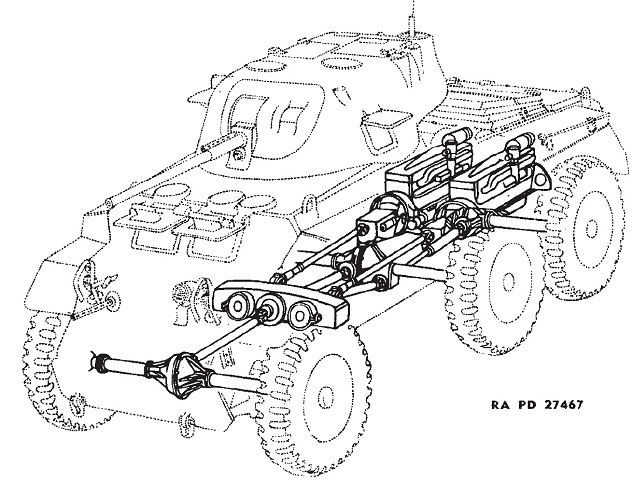
The layout of the engines, transmissions, transfer case, and drive shafts are illustrated in this picture. (Picture from TM 9-740 Armored Car T17.)
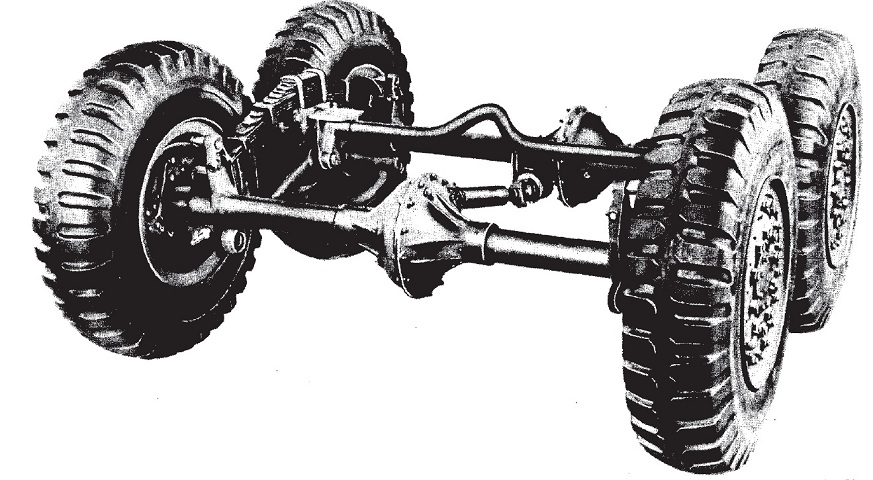
The rear suspension bogie with the intermediate and rear axles is shown here. (Picture from TM 9-740 Armored Car T17.)
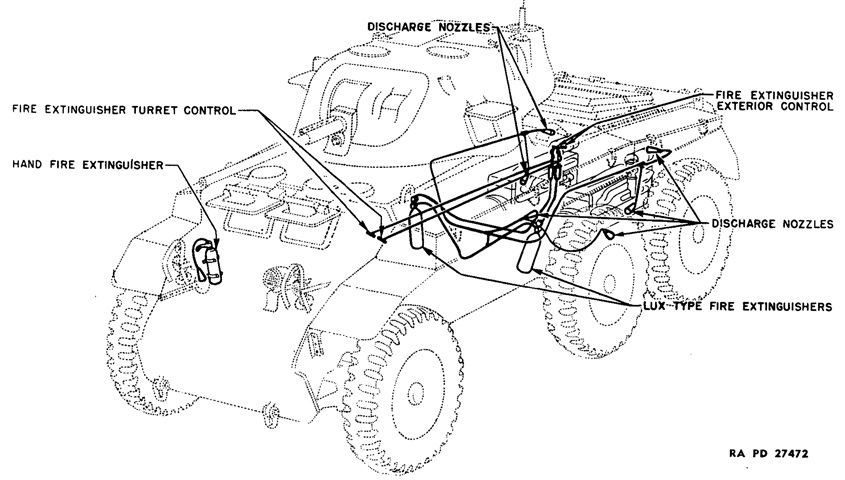
A 4lb (2kg) fire extinguisher was strapped to the hull to the right of the assistant driver, and two 10lb (4.5kg) CO2 fire extinguishers were clamped to the fighting compartment bulkhead behind the turret basket. If a fire broke out in the engine compartment, the fixed extinguishers could be activated by controls in the driver's compartment or on the left side of the hull roof behind the turret. A handle was provided for each extinguisher at each location. A fixed extinguisher could smother a fire with the engines running at up to 1200rpm. (Picture from TM 9-740 Armored Car T17.)